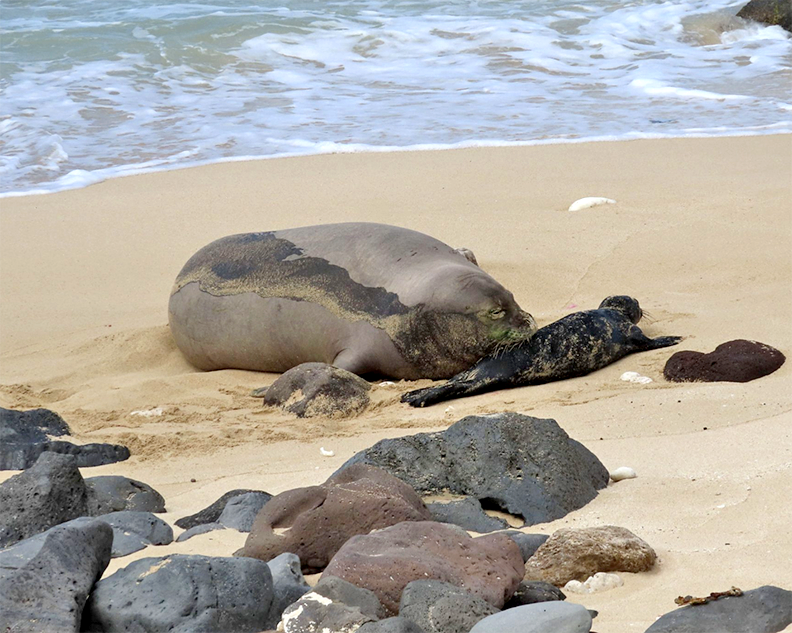
Vanilla blossoms cluster. Photo by Jan TenBruggencate
by Jan TenBruggencate
Kaua`i’s vanilla crop is one of the island’s best-kept secrets, although it’s still a very small secret, because vanilla is nowhere near being an industry on the island.
We are not a player in the global vanilla market, as Madagascar, Tahiti, Indonesia, Mexico, Thailand, Papua New Guinea, India and parts of Africa are.
But an increasing number of Kaua`i residents seem to be growing vanilla. Some just do it for curiosity and some for home use, but a few committed farmers actually grow significant numbers.
Vanilla isn’t difficult to grow, but it’s a farm crop that is exceedingly labor intensive because of the need for hand pollination. Only in their native Mexico do vanilla orchids get naturally pollinated.
That is done by a rare species of bee without a stinger, called Melipona. It’s the only insect that has figured out how to navigate the vanilla orchid’s complex reproductive geography to accomplish pollination. The bee doesn’t exist in other parts of the world, and vanilla thus is not naturally pollinated except in its native Mexico. All the rest of the globe’s vanilla crop is hand-pollinated.
Vanilla is a hardy orchid, with a thick stem and a delicate green blossom. It grows as a vine. It has been grown around the island as a curiosity for generations. Only recently have a few folks begun taking Kaua`i vanilla seriously.
Among the growers with significant numbers of vines are Neil Clendeninn of the North Shore and the Lydgate family at Steelgrass Farm. Each has in the neighborhood of a couple of hundred producing vines.
Clendeninn, who is developing a business plan for a vanilla growers’ cooperative, said there may be as few as three other growers of significant size. If you’re interested in building and running a small vanilla cooperative, give Clendeninn a call. He’s in the phone book.
But there are lots of small-time growers. Some supply their vanilla directly to restaurants, or just keep them for home use, or give them away as Christmas presents. The aromatic black beans find their ways into chocolates, drinks, desserts and all manner of goods.
Melissa McFerrin, executive administrator of the Kauai County Farm Bureau, said there seems to be a bigger demand for locally grown specialty products like vanilla than there is supply. But that may simply be because it’s a pain to convince a vanilla orchid to produce fruit.
If you’re getting vanilla beans on your vines, it means you’ve mastered the arcane art of vanilla pollination, a process that requires good eyes, a steady hand and a proper tool.
How tricky is it?
I recently visited the United States Botanic Garden in Washington D.C. The folks there were proud to this year have successfully pollinated one of their vanilla blossoms. As this is written, they are growing their very first vanilla bean. Read more about the garden at www.usbg.gov.
Kaua`i Nursery & Landscaping had produced a handbook on vanilla growing. It’s called About Vanilla Orchids and is available online at http://www.kauainursery.com/images/Vanilla%20Book.pdf.

Jan TenBruggencate
Jan TenBruggencate is an author and the former science writer for The Honolulu Advertiser. He operates a communications company, Island Strategy LLC. He serves on the board of the Kaua’i Island Utility Cooperative and on the County Charter Review Commission.
Discover more from ForKauaiOnline
Subscribe to get the latest posts sent to your email.




Leave a Reply